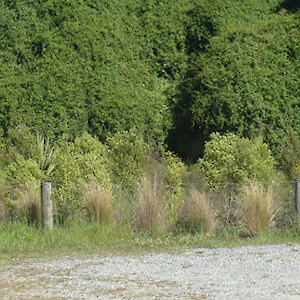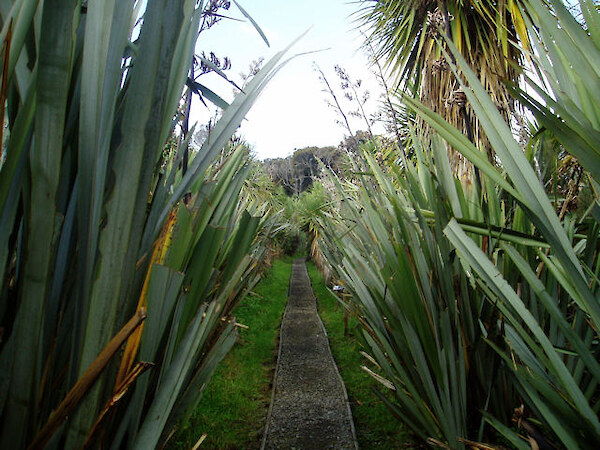SERN Spring Field Day 2013
Trip to Gore, Pukerau and Waimea Plains Restoration Sites. The Southland Ecological Restoration Network (SERN) Spring Field Day was held on Saturday 9th November. The annual bus trip this year explored restoration sites around Gore. The first stop was at Mataura, where the Hokonui Runaka plantings along the river bank north of the bridge were admired. The field trip in 2007 had visited this site at which stage it had just been planted out. The plants are now well established and are a great beginning of the vision of the runaka to bring the natives back to the banks of the Mataura River from here to Tuturau. The next stop was at Gore’s Hamilton Park, where the Gore & Districts Amenities Charitable Trust have spearheaded the vision of Margaret and Don Lamont, with the restoration of the old Gore dump site with natives. Work began in 2008 and already along the banks of the Waikaka Stream there is a fine stand of natives. With gum trees having been planted a number of years ago, these provide good shelter for the plantings being undertaken. The long term vision is to have a forested area that will encourage the native birds to visit here from the nearby Hokonuis and for the people of Gore to enjoy walking or biking through. The plantings are being overseen by Arne Cleland of Pukerau Nursery, with assistance from Janet Gregory, Landcare Trust, and other locals. With a total area of 13ha, this is a long term project, with currently about 200 plants going in per season. The group is hoping to be able to get funding to employ someone to undertake more bulk plantings to help the project along the way.
Towards lunchtime we headed on to Pukerau, checking out Environment Southland’s ripairan plantings on the Waipahi Stream, adjacent to Highway No 1. These plantings have a mix of native species and were set up using different management techniques as a trial, to establish best practice for riparian planting. With ribbonwood, cabbage trees, Pittosporum, toe toe and red tussock all doing well here it is a good example of what can be achieved. Lunchtime enabled the group to hear about the Cleland’s work at the nursery, as well as from Pukerau School pupils about the work that they have been doing to help restore the nearby DOC Red Tussock Reserve. They have been carrying out red tussock plantings in the reserve where a black backed gull colony had destroyed the wirerush vegetation and introduced exotic grasses. As well as that work, they have been creating a lizard friendly area at the school to encourage skinks back into the area. The final stop for the day was at Grant & Bernie Weller’s to hear about their environmental protection through good farming practice. The hills on their farm are carefully managed to retain the natural tussock cover, which they see as a valuable asset for stock shelter and water retention. They have two areas of forest and an area of Olearia shrubland that they have fenced and protected with QEII National Trust covenants. Riparian plantings and the creation of series of ponds in gullies as sediment/nutrient traps are further testament to their ethos of sustainable farming. Travelling back to Invercargill over the Glenure Hill, there was discussion on weeds, in particular barberry. Information from Environment Southland advised that biocontrol for this pest plant is hopefully to be released this season. The goal of SERN is to bring people together to share information about restoring our native habitats and inspire people in this work. Again this spring field day accomplished this with those attending being inspired by the work that is being undertaken in the Gore area to help protect and improve our environment.





